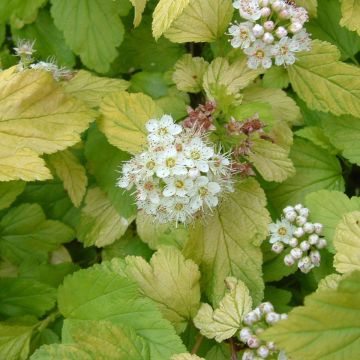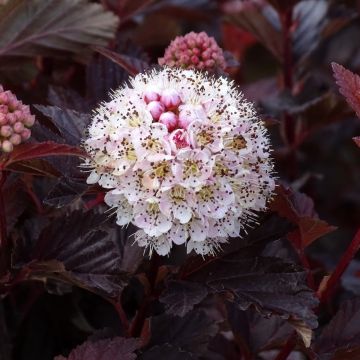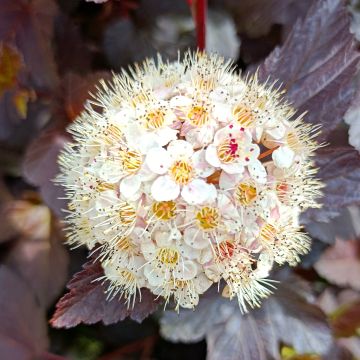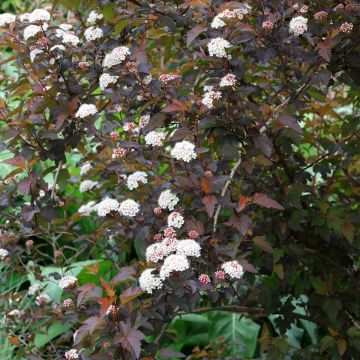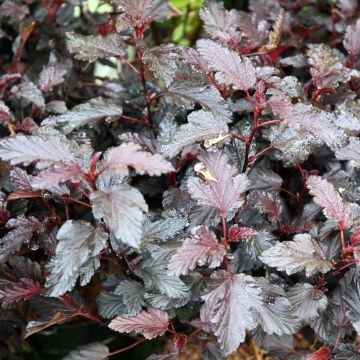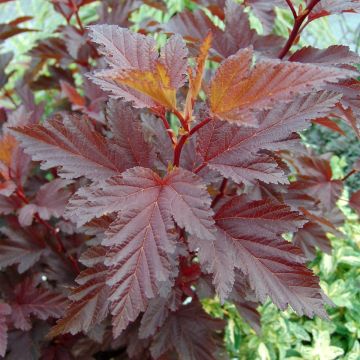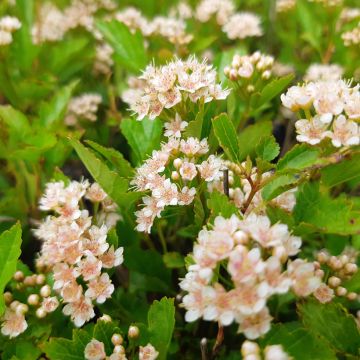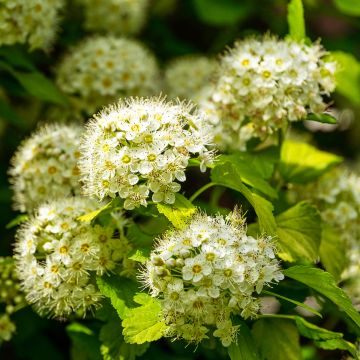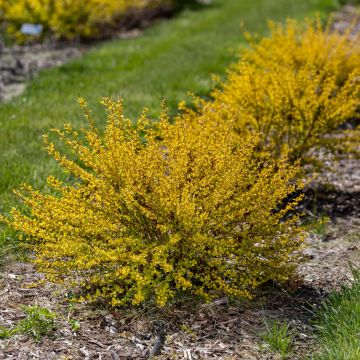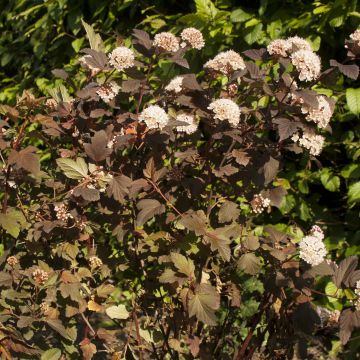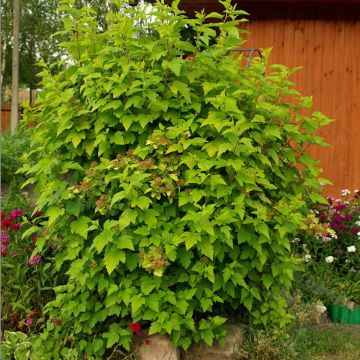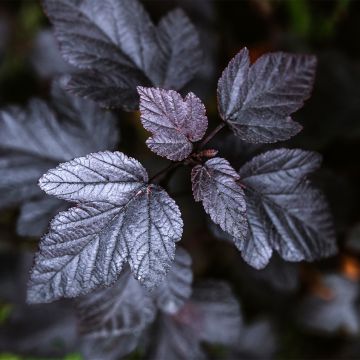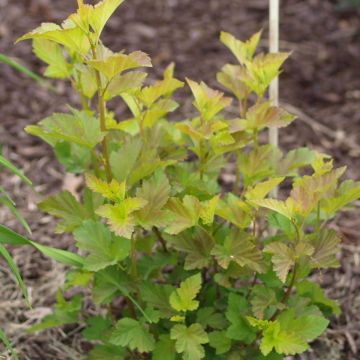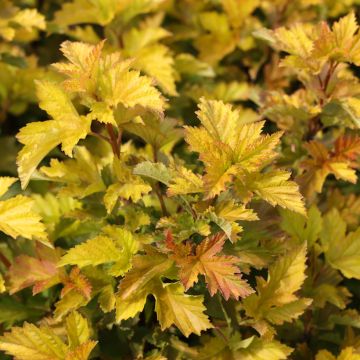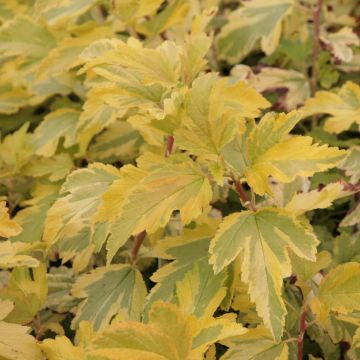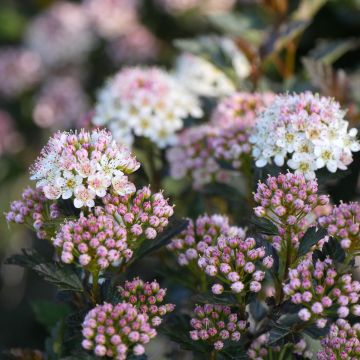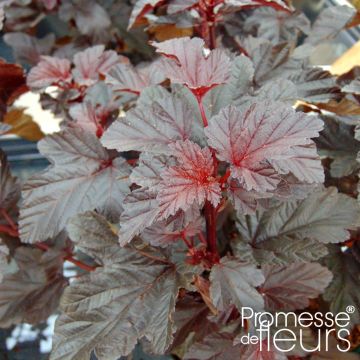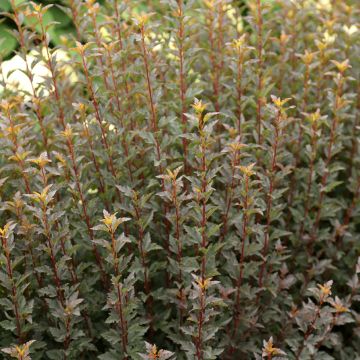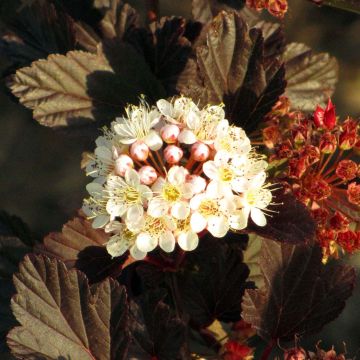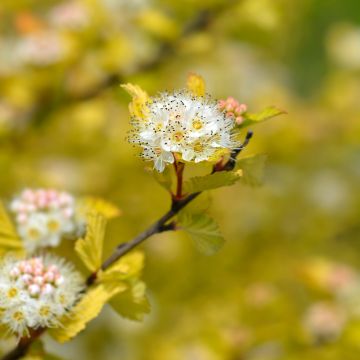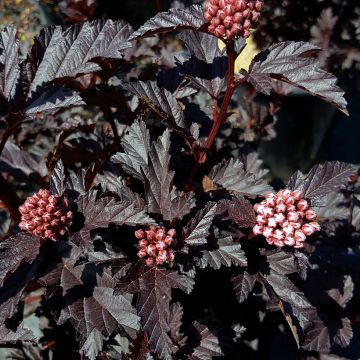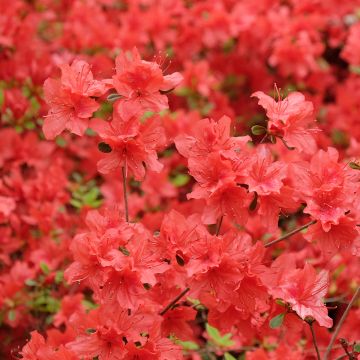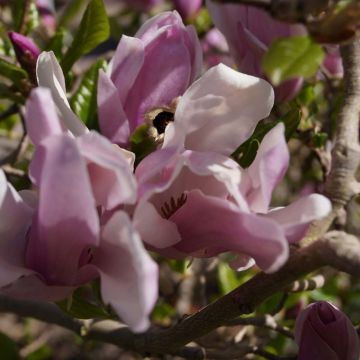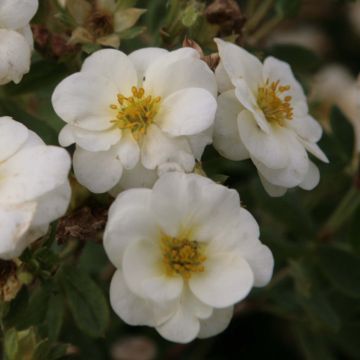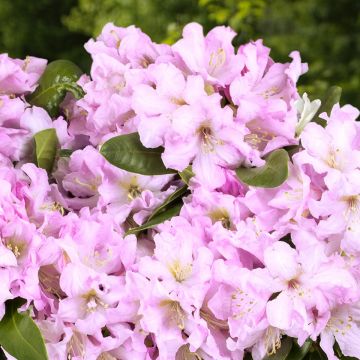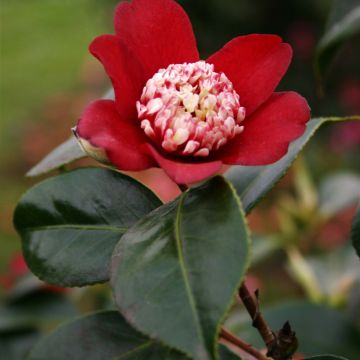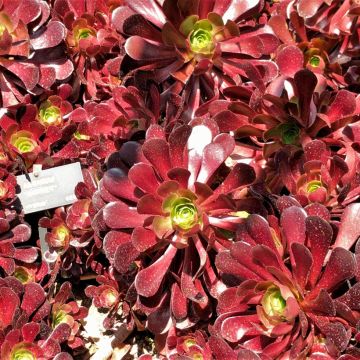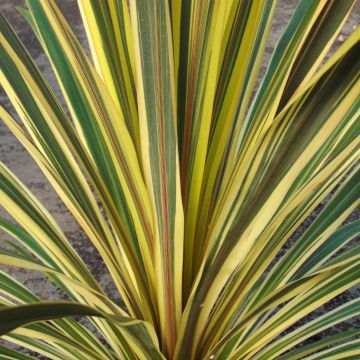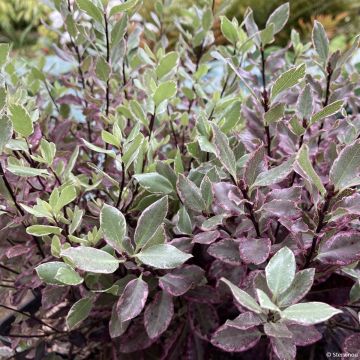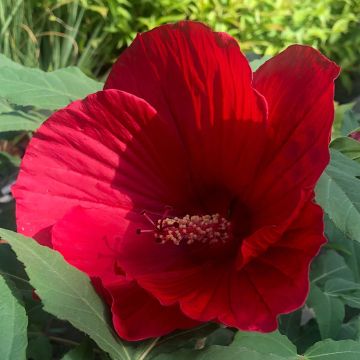Shipping country and language
Your country of residence may be:
Your country of residence is:
For a better user experience on our website, you can select:
Your shipping country:
-
Andorra
-
Austria
-
Belgium
-
Bulgaria
-
Canada
-
Chile
-
Croatia
-
Cyprus
-
Czechia
-
Denmark
-
Estonia
-
Finland
-
France
-
Germany
-
Greece
-
Hungary
-
Iceland
-
Ireland
-
Italy
-
Latvia
-
Lithuania
-
Luxembourg
-
Malta
-
Monaco
-
Netherlands
-
Poland
-
Portugal
-
Romania
-
Slovakia
-
Slovenia
-
Spain
-
Sweden
-
Switzerland
-
United Kingdom
We only deliver seed and bulb products to your country. If you add other products to your basket, they cannot be shipped.
Language:
-
French
-
German
-
Spanish
-
English
-
Italian
My Account
Hello
My wish lists
Log in / Register
Existing customer?
New customer?
Create an account to track your orders, access our customer service and, if you wish, make the most of our upcoming offers.
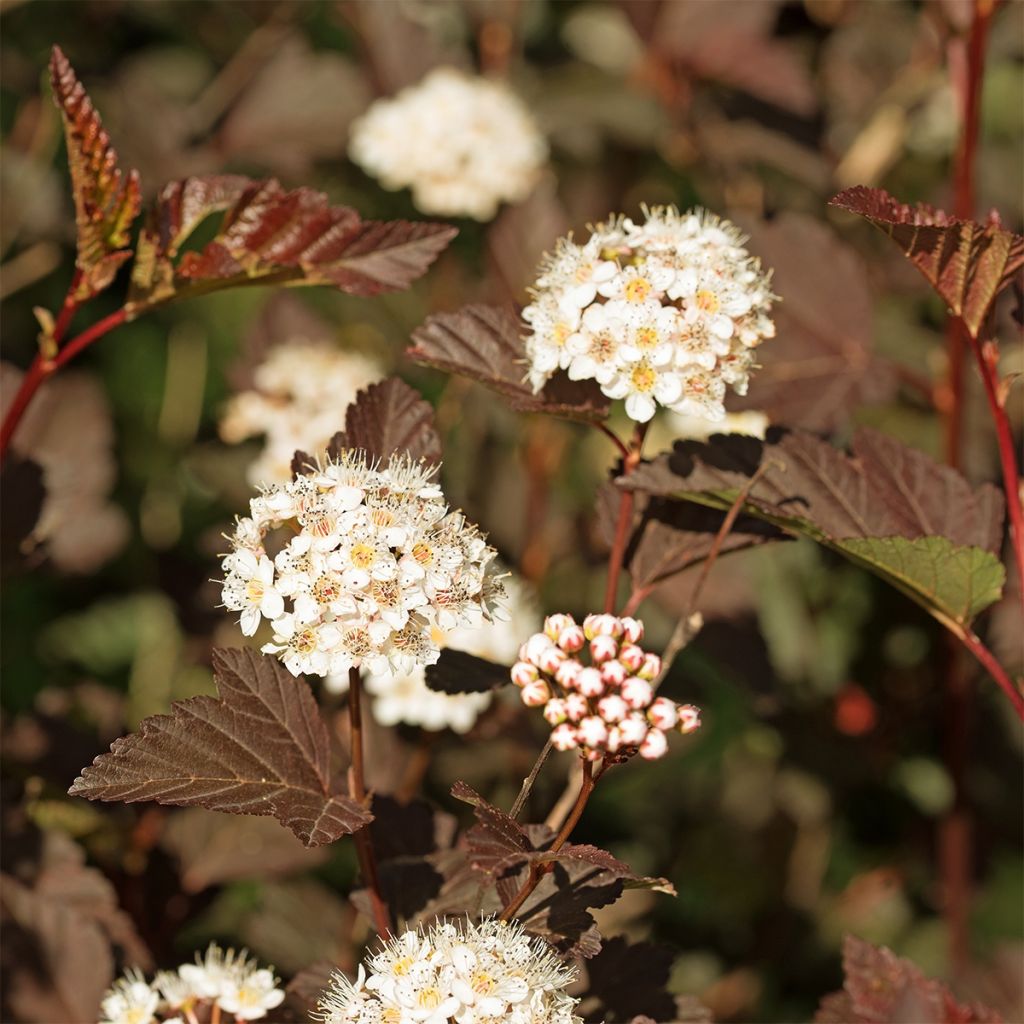

Physocarpus opulifolius Perspektiva - Physocarpe à feuilles d'Obier
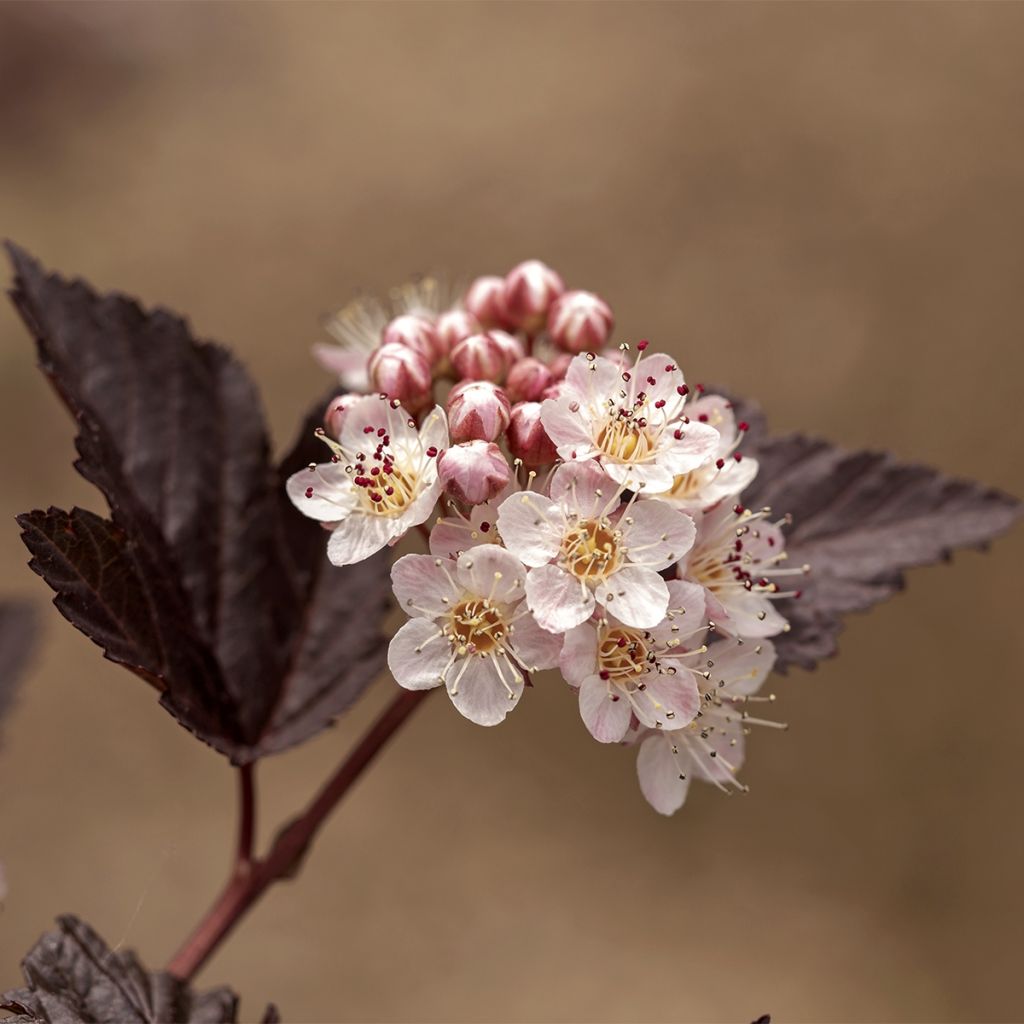

Physocarpus opulifolius Perspektiva - Physocarpe à feuilles d'Obier
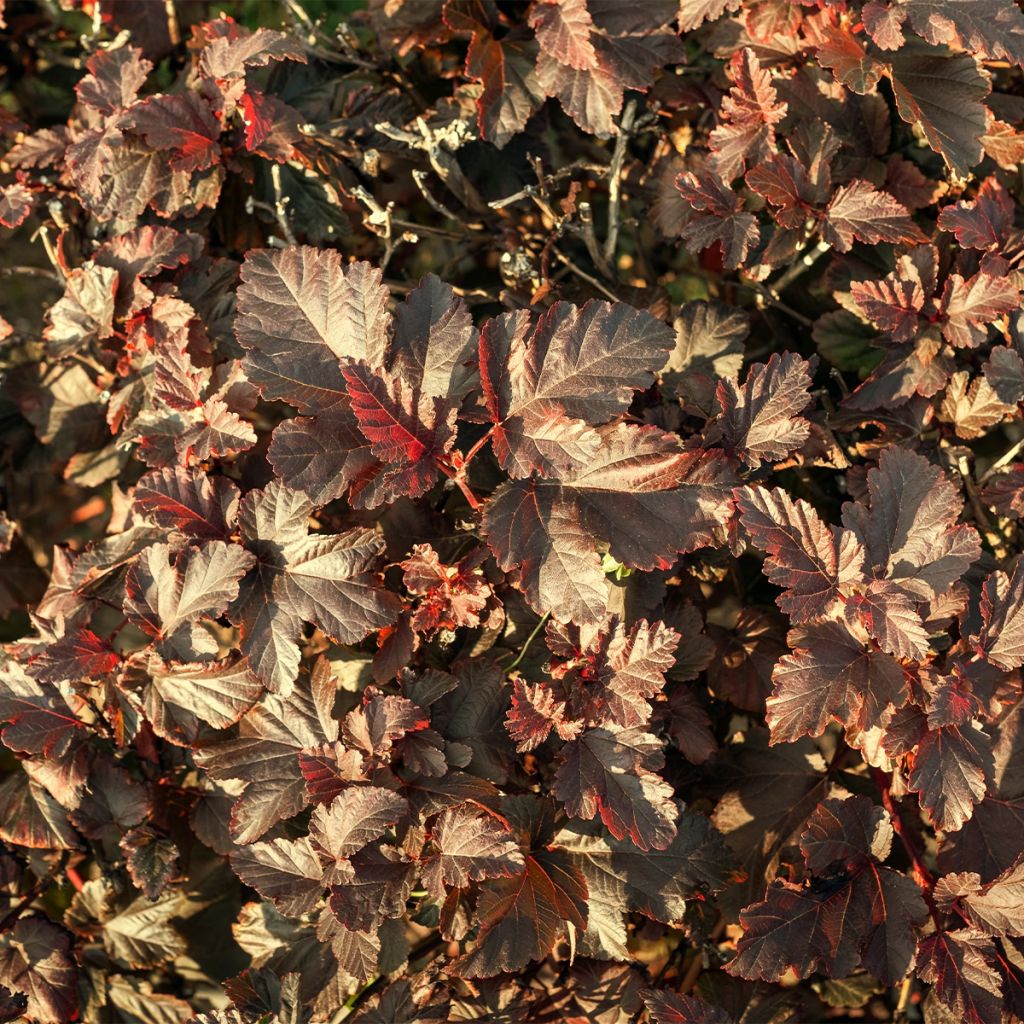

Physocarpus opulifolius Perspektiva - Physocarpe à feuilles d'Obier
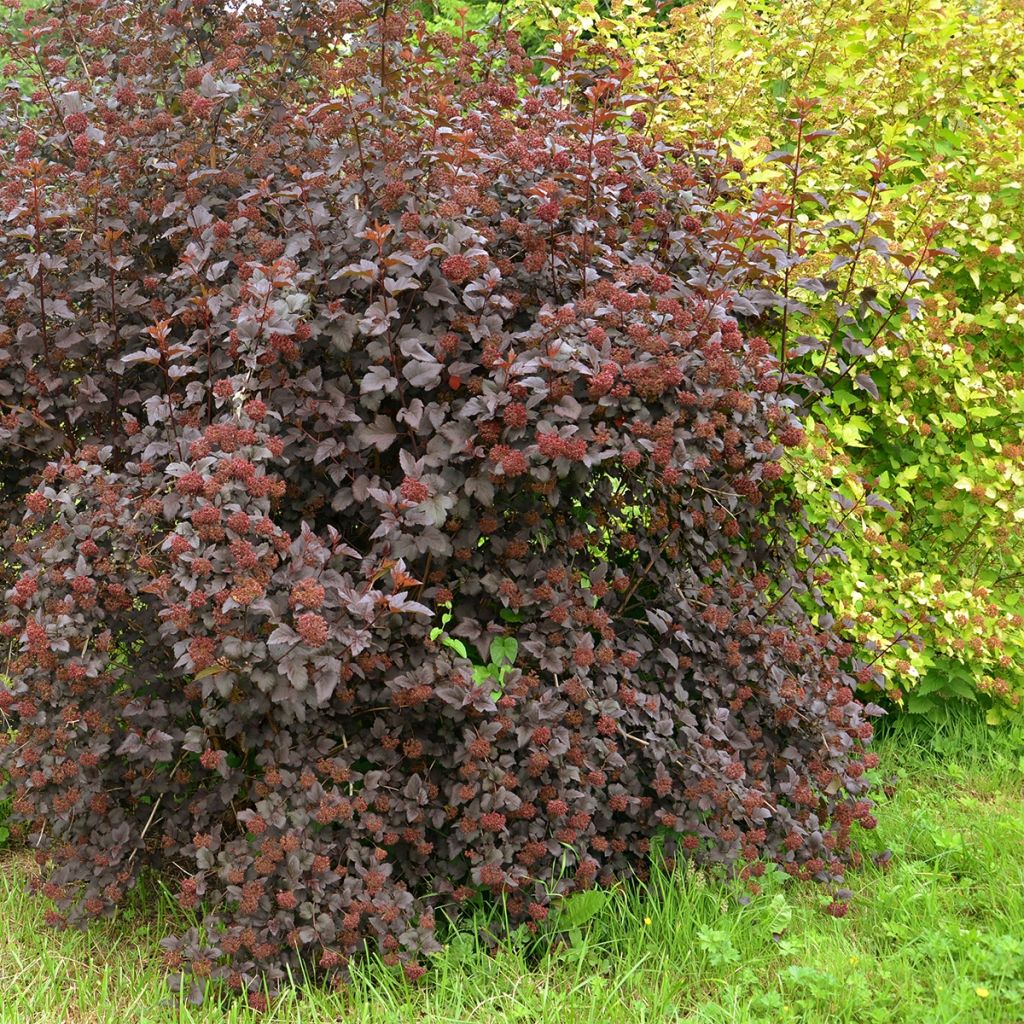

Physocarpus opulifolius Perspektiva - Physocarpe à feuilles d'Obier
Physocarpus opulifolius Perspectiva - Ninebark
Physocarpus opulifolius Perspektiva
Ninebark
Why not try an alternative variety in stock?
View all →Order in the next for dispatch today!
Dispatch by letter from €3.90.
Delivery charge from €5.90 Oversize package delivery charge from €6.90.
More information
This item is not available in your country.
Schedule delivery date,
and select date in basket
This plant carries a 24 months recovery warranty
More information
We guarantee the quality of our plants for a full growing cycle, and will replace at our expense any plant that fails to recover under normal climatic and planting conditions.
From €5.90 for pickup delivery and €6.90 for home delivery
Express home delivery from €8.90.
Does this plant fit my garden?
Set up your Plantfit profile →
Description
Physocarpus opulifolius 'Perspectiva' is a brand new variety of ninebark with compact and beautifully coloured leaves, well suited for pot cultivation and ornamentation in small spaces. The foliage of this adorable little bush emerges as coppery bronze in spring, gradually turning purple as it bursts into almost white flowers in late spring, grouped in small rounded clusters. Like all ninebarks, this rustic bush also produces small, light red decorative fruits until autumn. Perfectly hardy, it will thrive in most of our regions.
Physocarpus opulifolius belongs to the Rosaceae family and is native to the eastern United States, up to Quebec and Manitoba. The 'Perspectiva' Ninebark, is a compact form that will not exceed 80cm (32in) in all directions. It is a deciduous bush that loses its foliage in winter. It is well branched, with a rather upright and bushy habit. It is remarkable for the colouration of its leaves, which emerge in a reddish hue tinged with orange copper, gradually turning more and more purple as they unfold. The leaves are lobed, deeply cut, serrated, and measure from 3 to 8cm (1 to 3in). From spring to early summer, in May-June, flattened corymbs of buds appear, opening into small white flowers with pink stamens, nectar-rich and visited by bees. They are followed by light red fruits appreciated by birds in autumn. The bush remains decorative in winter, with its bark exfoliating in beige to reddish-brown patches.
The 'Perspectiva' Ninebark will find its place in all gardens, including the smallest ones, as well as on terraces and balconies, when planted in a large pot. To surround it and play with contrasts, choose bushes with golden foliage, white, red, or dark, such as purple barberries, 'Tor Gold' spirea, shrubby wormwoods, or 'Lady in Red' or 'All Black' Ninebarks. It will be charming as part of a small hedge. Heucheras with purple, silver, or golden foliage, or Heucherellas for example, can be planted at its base. It will also have a great effect when planted in a container on a terrace or balcony.
The name Physocarpus opulifolius comes from the Greek 'phusa', which means air bubble or vesicle, and 'karpos', which refers to the fruit, in reference to the shape of the fruit. The resemblance of its foliage to that of the Viburnum opulus earned it its specific name "opulifolius". Introduced to Europe around 1687, the numerous colourful cultivars that have been created in recent years have led to its strong comeback in gardens.
Report an error about the product description
Physocarpus opulifolius Perspectiva - Ninebark in pictures
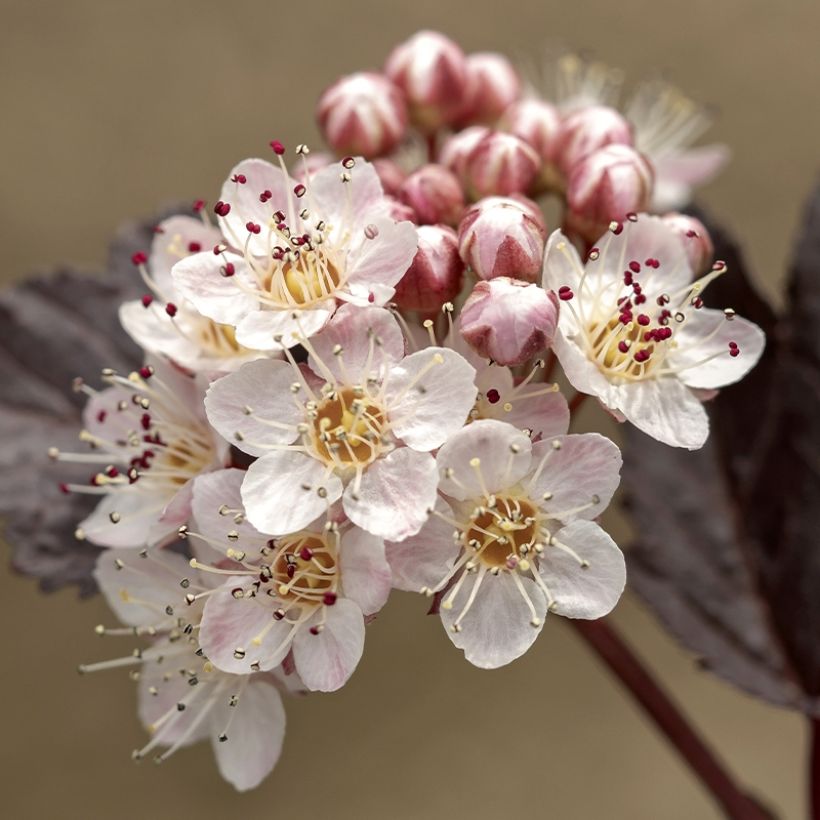

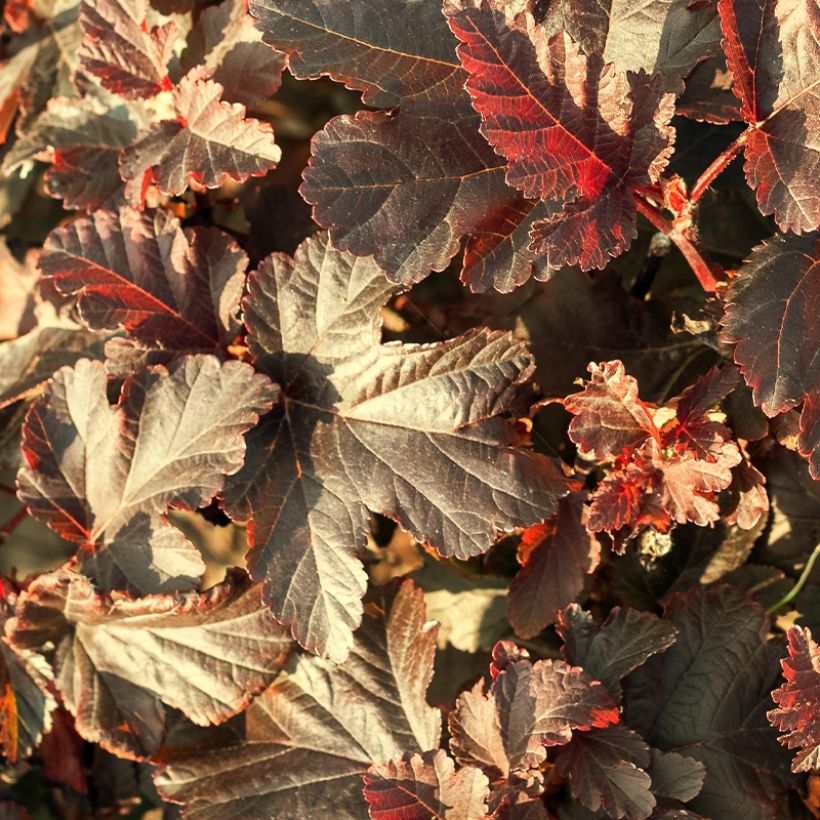

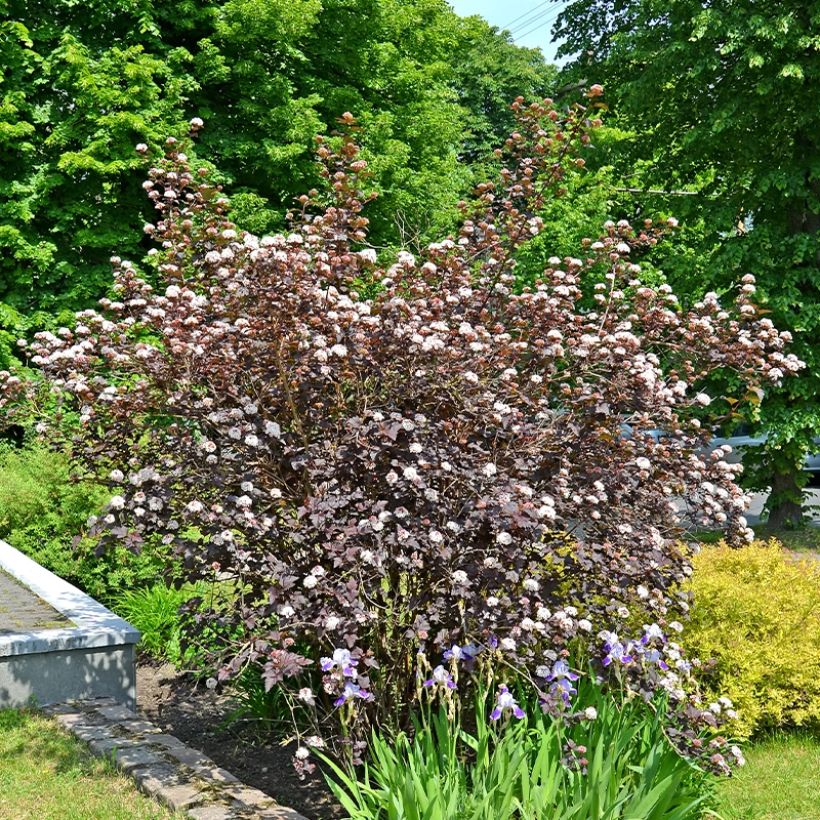

Plant habit
Flowering
Foliage
Botanical data
Physocarpus
opulifolius
Perspektiva
Rosaceae
Ninebark
Cultivar or hybrid
Other Physocarpus
Planting and care
Plant Physocarpus opulifolius 'Perspectiva' in deep, humus-rich, fertile, and moist soil, which can be acidic, neutral, or even slightly alkaline, although it does not tolerate excessive presence of limestone. It is important to avoid letting the soil dry out excessively in summer and to spray the foliage during heatwaves, especially in hot regions. This bush will thrive in partial shade or full sun, although it should be protected from intense sun exposure. Prune some of the arching stems heavily after flowering to improve air circulation in dense plants. This can promote the development of new flower buds in late summer. Physocarpus tends to produce many suckers, to the detriment of the main plant; it may be useful to prune it back to create a denser appearance.
Planting period
Intended location
Care
This item has not been reviewed yet - be the first to leave a review about it.
Shrubs for pots
Haven't found what you were looking for?
Hardiness is the lowest winter temperature a plant can endure without suffering serious damage or even dying. However, hardiness is affected by location (a sheltered area, such as a patio), protection (winter cover) and soil type (hardiness is improved by well-drained soil).

Photo Sharing Terms & Conditions
In order to encourage gardeners to interact and share their experiences, Promesse de fleurs offers various media enabling content to be uploaded onto its Site - in particular via the ‘Photo sharing’ module.
The User agrees to refrain from:
- Posting any content that is illegal, prejudicial, insulting, racist, inciteful to hatred, revisionist, contrary to public decency, that infringes on privacy or on the privacy rights of third parties, in particular the publicity rights of persons and goods, intellectual property rights, or the right to privacy.
- Submitting content on behalf of a third party;
- Impersonate the identity of a third party and/or publish any personal information about a third party;
In general, the User undertakes to refrain from any unethical behaviour.
All Content (in particular text, comments, files, images, photos, videos, creative works, etc.), which may be subject to property or intellectual property rights, image or other private rights, shall remain the property of the User, subject to the limited rights granted by the terms of the licence granted by Promesse de fleurs as stated below. Users are at liberty to publish or not to publish such Content on the Site, notably via the ‘Photo Sharing’ facility, and accept that this Content shall be made public and freely accessible, notably on the Internet.
Users further acknowledge, undertake to have ,and guarantee that they hold all necessary rights and permissions to publish such material on the Site, in particular with regard to the legislation in force pertaining to any privacy, property, intellectual property, image, or contractual rights, or rights of any other nature. By publishing such Content on the Site, Users acknowledge accepting full liability as publishers of the Content within the meaning of the law, and grant Promesse de fleurs, free of charge, an inclusive, worldwide licence for the said Content for the entire duration of its publication, including all reproduction, representation, up/downloading, displaying, performing, transmission, and storage rights.
Users also grant permission for their name to be linked to the Content and accept that this link may not always be made available.
By engaging in posting material, Users consent to their Content becoming automatically accessible on the Internet, in particular on other sites and/or blogs and/or web pages of the Promesse de fleurs site, including in particular social pages and the Promesse de fleurs catalogue.
Users may secure the removal of entrusted content free of charge by issuing a simple request via our contact form.
The flowering period indicated on our website applies to countries and regions located in USDA zone 8 (France, the United Kingdom, Ireland, the Netherlands, etc.)
It will vary according to where you live:
- In zones 9 to 10 (Italy, Spain, Greece, etc.), flowering will occur about 2 to 4 weeks earlier.
- In zones 6 to 7 (Germany, Poland, Slovenia, and lower mountainous regions), flowering will be delayed by 2 to 3 weeks.
- In zone 5 (Central Europe, Scandinavia), blooming will be delayed by 3 to 5 weeks.
In temperate climates, pruning of spring-flowering shrubs (forsythia, spireas, etc.) should be done just after flowering.
Pruning of summer-flowering shrubs (Indian Lilac, Perovskia, etc.) can be done in winter or spring.
In cold regions as well as with frost-sensitive plants, avoid pruning too early when severe frosts may still occur.
The planting period indicated on our website applies to countries and regions located in USDA zone 8 (France, United Kingdom, Ireland, Netherlands).
It will vary according to where you live:
- In Mediterranean zones (Marseille, Madrid, Milan, etc.), autumn and winter are the best planting periods.
- In continental zones (Strasbourg, Munich, Vienna, etc.), delay planting by 2 to 3 weeks in spring and bring it forward by 2 to 4 weeks in autumn.
- In mountainous regions (the Alps, Pyrenees, Carpathians, etc.), it is best to plant in late spring (May-June) or late summer (August-September).
The harvesting period indicated on our website applies to countries and regions in USDA zone 8 (France, England, Ireland, the Netherlands).
In colder areas (Scandinavia, Poland, Austria...) fruit and vegetable harvests are likely to be delayed by 3-4 weeks.
In warmer areas (Italy, Spain, Greece, etc.), harvesting will probably take place earlier, depending on weather conditions.
The sowing periods indicated on our website apply to countries and regions within USDA Zone 8 (France, UK, Ireland, Netherlands).
In colder areas (Scandinavia, Poland, Austria...), delay any outdoor sowing by 3-4 weeks, or sow under glass.
In warmer climes (Italy, Spain, Greece, etc.), bring outdoor sowing forward by a few weeks.
